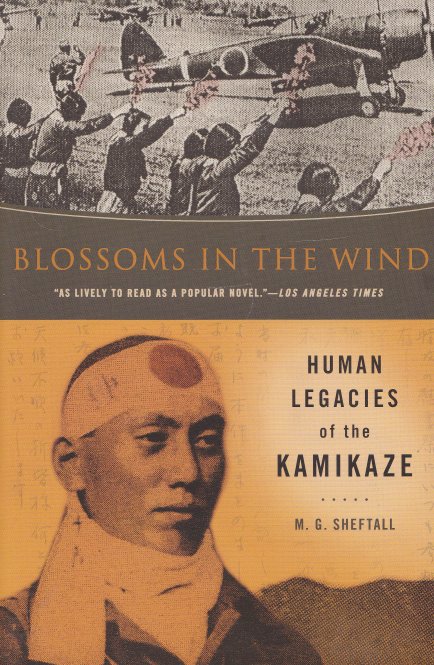
Blossoms in the Wind: Human Legacies of the Kamikaze

This is an interesting and different sort of book on the subject. It's not written as a historical analysis. It does include some of that, of course, but it also includes a lot of personal memories from people actually involved in the kamikaze activities as interviewed by the author. The author's own impressions are given, and this makes the entire book a little more alive than most others of its general nature.
He addresses the origin of the kamikaze movement in WWII and notes that it actually had no precedent in Japanese history. There may have been isolated instances of kamikaze-like behavior, but no organized mass attack concepts as there were during the war. Public relations were also part of its origin, trying to convince people this was a glorious thing these men were doing.
He notes that some of the Japanese leaders did want to drive the white man out of Asia, and some were concerned about Japan not having enough natural resources to continue its war in China. As things went from bad to worse, Japan began to run out of military options. Nothing they did could seem to stop the inexorable movement of American forces closer and closer to the Japanese mainland. The Japanese Navy had been basically sunk and was no longer a major factor in the war effort.
He also writes about how, in the last part of the war, the quality control in production was so low that there was a major problem.
The author again goes into the PR importance of the kamikaze, a sort of trickle-down effect. If they succeeded, it would raise the morale of the military. As the common people heard about the successes, (which were often blown way out of proportion), then they would get excited and work harder for the war effort.
The Leyte Gulf battle had an effect on the growing support in the military for the kamikaze. In that battle the Japanese lost four aircraft carriers, three battleships (including the Musashi, the sister-ship of the Yamato), six heavy cruisers, four light cruisers, twelve destroyers, and four submarines. The main thing to keep in mind about this is that the Japanese could not afford to lose such numbers of ships since there was no way that they could replace them. The U.S. ship-building was capable of more than replacing ship losses, but the Japanese couldn't, so as one group would get stronger, the other would naturally get weaker and that's exactly what happened.
One of the great things the author does is detail the revisionist approach to history. The Japanese revisionists holds that Japan was threatened by the colonial powers, that they wanted to free Asia from whites and from the Soviet threat, the Nanking massacre and similar things didn't happen, and so on.
He goes into the daily lives of the kamikaze, showing the types of things they were doing in getting read for their own expected deaths.
The author also goes into the Oka flying bombs and how a lot of those ended up at the bottom of the ocean when ships carrying them were sunk by U.S. subs. The end result of the Oka program was one U.S. ship sunk and six damaged, with the loss of 375 Oka crewmen (counting the crew in the planes carrying the Oka to their launch point), and 55 Oka pilots.
An interesting point is that one of the pilots saw, while out walking, women training with bamboo spears. The Japanese government was going to use all the people they could to repel the expected U.S. invasion, even if they were almost untrained and had only bamboo spears to fight with.
(I think if that had happened it would have increased the hatred for the Japanese tremendously, “proving” to people in the U.S. that the Japanese were all totally fanatical, and the only thing to stop them was total annihilation. Killing Japanese civilians would have become as completely acceptable as killing their regular soldiers.)
There's also lots more in the book. This is one of the best, maybe the best book that examines the topic of the kamikaze, especially since it does so from so many different angles, including military, historical, psychological, sociological, and personal.
Main Index
Japan main page
Japanese-American Internment Camps index page
Japan and World War II index page
|